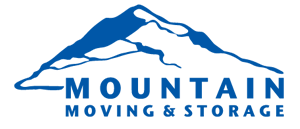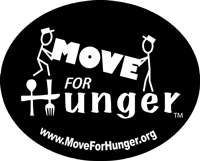7 Tacoma Long-Distance Moving Tips
Planning a long-distance move to or from Tacoma?
Whether you’re relocating across the state or across the country, a successful Tacoma move starts with careful preparation. From creating a detailed budget to organizing your belongings for efficient unpacking, every detail counts when you’re moving long distances.
To effectively streamline your cross-country move, use this guide and follow these seven steps.
- Budget for Moving Expenses
- Hiring a Reputable Moving Company
- Packing Strategies and Organization
- Inventory Management and Labeling
- Handling Fragile and Valuable Items
- Moving Insurance and Valuation Coverage
- Utility and Address Change Procedures
1. Budgeting for Moving Expenses
How to Get Accurate and Competitive Tacoma Moving Estimates
Requesting multiple quotes ensures you get the best deal. Reach out to at least three long-distance moving companies and ask for at-home or video estimates, as these provide the most precise pricing.
- Binding Estimates: These set a fixed price based on a detailed review of your belongings. For interstate moves, “You are required to pay 100 percent of the binding estimate at the time of delivery,” says the Federal Motor Carrier Safety Administration (FMCSA).
- Non-Binding Estimates: Costs may change depending on the actual weight and services required, as well as any potential published tariffs.
- Not-to-Exceed Estimates: With this, you’ll pay the quoted cost or less, preventing unexpected price hikes.
Compare estimates carefully. Look beyond the total price—assess other cost factors, including services, additional fees, and weight calculations to avoid potential surprises.
Tips for Saving on Packing Materials and Moving Services
Reducing expenses starts with smart material sourcing and service choices. Here’s how:
- Get Free Boxes: Grocery stores, local businesses, and online community groups often have sturdy used boxes.
- Use Household Items for Padding: Towels, blankets, and clothing replace costly bubble wrap and packing paper.
- Book Movers Early: Rates fluctuate based on demand; scheduling far in advance locks in lower prices.
- Relocate During Off-Peak Periods: Moving mid-month or mid-week avoids premium charges.
- Declutter Before Packing: Sell, donate, or recycle items you no longer need to cut down the total weight and movers’ labor time.
Hidden Costs to Consider When Moving to or from Tacoma
Unaccounted expenses can strain your budget. Plan for these costs:
- Moving Season Surcharges: “The summer months are right in the middle of peak moving season, which means increased prices, less flexibility availability, and the highest temperatures of the year,” Ally Sabatina from MoveBuddha reports.
- Travel Fees: Long-distance moves include fuel charges, tolls, and driver lodging, affecting final costs.
- Storage Fees: If your new home isn’t move-in ready, temporary storage adds rental charges.
- Additional Insurance: Basic mover liability often isn’t enough; Full-Value Protection coverage, while beneficial in the long run, does increase costs.
- Utility Deposits and Setup Fees: New service connections may require security deposits or installation fees.
Prepare for these expenses by adding a 10–15% buffer to your moving budget. That way, unexpected fees won’t disrupt your financial plans.
2. Hiring a Reputable Moving Company
Evaluating Long-Distance Moving Companies for Reliability and Customer Satisfaction
Choosing a professional mover ensures a smooth and stress-free long-distance relocation. Researching customer reviews on platforms like Google Reviews, Angi, Yelp, and the Better Business Bureau (BBB) provide insight into reliability.
- Google Customer Reviews: Provides star ratings and firsthand customer experiences, helping gauge a moving company’s reliability and service quality.
- Angi: Ensures verified customer reviews and provides insights on pricing, service quality, and background-checked movers for added trust.
- Yelp: Offers detailed reviews, ratings, and photos from past customers, making it easy to assess movers based on real experiences.
- Better Business Bureau (BBB): Tracks complaints, resolutions, and accreditation, helping identify movers with strong ethical standards and customer service.
Additionally, assess for patterns of complaints about damaged goods, late deliveries, or hidden fees suggest potential risks. On the other hand, repeated praise for professionalism, timeliness, and transparent pricing signals a company worth considering.
Asking friends, colleagues, or real estate agents for recommendations also helps. “Lastly, don’t overlook the power of customer reviews. Real experiences from past clients can give you valuable insights into the company’s reliability, professionalism and how they handle issues,” Forbes Contributors Barbara Zito Kristi Waterworth add.
Checking for Required Licenses and Insurance When Booking Your Move
Legitimate movers operate with the necessary licenses and insurance, offering optimal protection for both you and your belongings.
- USDOT license: Interstate movers must have a U.S. Department of Transportation (USDOT) number, which can be reviewed and verified on the Federal Motor Carrier Safety Administration’s (FMCSA) website.
- UTC license: “In order to operate in Washington, transportation companies must be licensed/permitted [with the UTC] and demonstrate proof of insurance,” The Washington Utilities and Transportation (UTC) report on their official website.
Additionally, ask for proof of insurance before signing any contracts. A reputable company covers:
- General liability
- Cargo protection
- Workers’ compensation
The insurance levels should also align with the value of your belongings, particularly for high-value items.
Ask your mover for a written estimate and ensure it includes all costs. Hidden charges often appear in vague contracts, so reviewing terms thoroughly prevents surprises later. A binding quote guarantees a fixed price, preventing last-minute cost increases.
By selecting a licensed, insured, and well-reviewed moving company, you eliminate potential risks and ensure a smooth Tacoma long-distance move.
3. Packing Strategies and Organization
Efficient Packing Techniques for a Smooth Tacoma Move
Maximizing space and ensuring belongings arrive intact starts with strategic packing.
- General Inventory: Use sturdy boxes of various sizes to accommodate different items and reinforce them with high-quality packing tape.
- Heavy Items: Bulky items like books should go in smaller boxes to prevent excessive weight, while lighter items can be packed in larger containers.
- Clothes: Roll them to conserve space, and vacuum-sealed bags further reduce bulk.
- Fragile and High-Value Items: They require special attention—wrap each piece of inventory in packing paper or bubble wrap and cushion them with soft materials like towels or clothing.
- Furniture: Dismantle where possible to save space and protect delicate components with moving blankets or padding.
Create an essentials box containing first-day necessities such as:
- Toiletries
- Chargers for essential electronics
- Important documents
- A change of clothes
This prevents rummaging through multiple boxes upon arrival.
Tacoma’s Weather Considerations When Packing Your Belongings
Weather fluctuations in Tacoma require thoughtful packing choices.
- Damp Climate: Plastic bins with airtight lids offer extra protection for items vulnerable to humidity, like paperwork, electronics, and clothing.
- Winter Months: Temperature-sensitive items such as wooden furniture and electronics should be insulated with blankets or foam wraps to prevent warping or condensation damage during winter.
- Summer Months: Summer moves bring different challenges—avoid leaving heat-sensitive items, like candles or vinyl records, in a non-climate-controlled truck for extended periods.
- Waterproofing: Use plastic wrap around fabric-covered furniture and place moisture absorbers inside boxes containing items prone to mold. If rain is in the forecast, double-bag delicate materials and consider moving them last to minimize exposure.
Practical Labeling Strategies for Easy Unpacking
“To know what’s what during a move, you should label every box, bin, and bag. The best way to do that is to have plenty of Sharpie markers on hand,” states Kat Dillon from the New York Times. Mark each box with its contents and the intended room using a bold marker. Color-coded labels simplify identification—assign a different color to each room and stick corresponding labels on each box.
Adding a numbering system ensures organization. Keep a written inventory list, noting box numbers and their contents so nothing goes missing. Label all sides of a box, not just the top, ensuring readability even when stacked. “Open First” stickers highlight priority boxes, helping you access necessary items upon arrival.
Incorporating QR codes linked to digital inventories adds another level of efficiency—scan the code to instantly access a detailed list of items within each box. Taking these extra steps upfront reduces stress and accelerates the settling-in process.
4. Inventory Management and Labeling
Creating a Detailed Inventory List
Tracking every item before a long-distance move prevents loss and confusion. “Use a binder to keep track of everything—all your estimates, your receipts, and an inventory of all the items you’re moving,” suggests Leslie Corona from RealSimple.com.
Additionally, start recording your belongings room by room, noting:
- Descriptions
- Quantities
- Their condition
For high-value items, include serial numbers or photographs to support potential insurance claims.
Spreadsheets also work well for sorting by category, priority, or fragility. If movers are involved, cross-check their provided inventory to ensure accuracy. This level of organization speeds up both packing and unpacking.
Why Labeling Matters for a Smooth Move
Effective labeling makes unloading and setup much easier. Boxes should include clear identifiers such as:
- Room designation: Indicating “Kitchen” or “Bedroom” tells movers exactly where each box belongs.
- Contents summary: A brief label like “Cookware & Utensils” helps in prioritizing unpacking.
- Fragility indicators: Mark items with “Fragile” or “This Side Up” to prevent mishandling.
- Priority markers: Highlight essential items needed immediately upon arrival with stickers or color-coding.
Using permanent markers works, but pre-printed labels or colored tape creates even clearer categorizations. Combined with an inventory checklist, this strategy speeds up locating specific belongings after the move.
Using Apps and Technology for Inventory Management
Modern solutions simplify tracking and organization. Inventory management apps allow users to create digital lists with photos and details. Some examples include:
- Sortly
- Moving App
- Magic Home Inventory
Barcode scanners on some platforms provide instant item retrieval, reducing guesswork upon arrival.
Cloud storage ensures that your inventory list isn’t lost during transit. Spreadsheet software like Google Sheets or Excel also provide a structured, shareable option for staying on top of every item. Syncing these records with family members or movers adds an extra layer of coordination.
5. Handling Fragile and Valuable Items
Special Packaging Services for Tacoma’s Terrain and Climate
Tacoma’s varied climate and terrain require tailored packing solutions. High humidity near the coastline can introduce moisture risks, while elevation changes during transit may lead to pressure fluctuations.
Professional moving services offer specialized packaging, including:
- Climate-resistant wraps
- Moisture-barrier containers
- Reinforced cushioning designed to absorb road vibrations.
These measures ensure delicate belongings remain secure despite shifting conditions.
Securing Antiques and Valuables During a Long Road Journey
“Protective padding is key when moving antiques. Wrap your valuables in moving blankets, bubble wrap, or packing paper to prevent scratches and chips,” Move.org recommends.
It’s also important to secure your fragile possessions by using:
- Double-walled boxes
- Foam padding
- impact-resistant wraps
For high-value items such as jewelry, documents, or collectibles, consider hand-carrying them rather than placing them in the moving truck. Additionally, ensure each piece has an inventory record with photographs to document its condition before transport.
- Use acid-free packing materials for artwork to prevent deterioration.
- Wrap fragile glass and ceramics individually with bubble wrap.
- Store valuables in hard-sided containers to prevent external pressure damage.
Custom Crating Solutions for Sensitive Items
For highly delicate or unusually shaped belongings, custom crating offers superior protection. Wooden crates are essential for safeguarding inventory, such as:
- Art sculptures
- Musical instruments
- Chandeliers
Moving companies specializing in long-distance relocations provide custom-built crates with internal foam lining, helping to stabilize fragile components and reduce movement-related stress. Investing in these solutions minimizes breakage risk during extended transport.
6. Moving Insurance and Valuation Coverage
Understanding the Difference Between Moving Insurance and Valuation Coverage
Many people assume moving insurance and valuation coverage are the same, but they serve different purposes. Moving companies typically provide valuation coverage, which establishes the mover’s financial liability for lost or damaged items. This isn’t full insurance but a predefined level of compensation.
On the other hand, moving insurance coverage is a separate policy that offers additional protection. Many reputable long-distance movers offer multiple forms of insurance protection to partially or fully cover the value of your belongings in case of accidents, loss, or damage. Understanding this distinction helps in making an informed decision about safeguarding your possessions.
Options for Moving Insurance in Tacoma
Residents moving to or from Tacoma have several options for insuring their belongings. Moving companies usually offer multiple types of valuation coverage:
- Released Value Protection: The default coverage option that provides minimal compensation—typically $0.60 per pound per item, but comes at no additional cost.
- Full Value Protection: Under this option, “Your mover is responsible for the replacement value of lost or damaged goods in your entire shipment. This is the more comprehensive, but also more expensive, option for protecting your belongings,” notes The Federal Motor Carrier Safety Administration (FMCSA) on their official website.
- Items of Extraordinary Value Declaration: This form of coverage falls under Full Value Protection and declares exceptionally valuable possessions, typically $100 per pound, separately from your inventory, ensuring they receive special attention during the move. This includes high-value items like antiques, jewelry and fine art.
For those seeking broader coverage, third-party moving insurance providers such as MovingInsurance.com and Baker International offer policies that insure belongings beyond a moving company’s liability. Homeowners’ insurance policies may also provide moving-related coverage, so checking with your provider is worthwhile.
Choosing the Right Coverage for Your Belongings
- Assess the value of your belongings before making a choice. High-value items like electronics, antiques, and jewelry may require additional coverage.
- Compare the cost of third-party insurance with a moving company’s Full Value Protection to determine which offers better protection for the price.
- Read policy details carefully. Some moving insurance plans exclude coverage for self-packed boxes.
- Consider adding additional riders for specialty items if standard coverage doesn’t fully protect your valuables.
Choosing the right coverage prevents financial losses and ensures peace of mind during your long-distance move. Some research now can prevent a lot of unwarranted stress in the long run.
7. Utility and Address Change Procedures
Setting Up Utilities Before Moving Day
Arriving at a new home without electricity, water, or internet is frustrating. Avoid last-minute surprises by transferring or setting up essential services in advance. “When transferring your electric service, arrange for shut off at your current place to happen at the end of moving day and for service at your new location to start either the morning of your move-in or the evening before,” says Moving.com.
Additionally, contact your other utility providers at least two to three weeks before your move to schedule service activation.
- Electricity and Gas: Notify your current provider about your move-out date and set up a new account if your provider doesn’t service the new location.
- Water and Sewer: Check with the local municipality for service initiation or transfer.
- Internet and Cable: Compare providers in your new area to find the best plan and schedule installation before moving in.
- Trash and Recycling: Confirm pick-up schedules with the local waste management company.
- Security Systems: If you have a home security system, coordinate with the provider to transfer or upgrade services.
Updating Your Address Everywhere It Matters
Changing your address isn’t just about mail. Banks, insurance providers, and government agencies need updated records to ensure uninterrupted service. Use this checklist to cover all bases:
- United States Postal Service (USPS): Submit a change of address request online or at your local post office.
- Bank and Credit Card Companies: Update billing addresses to prevent transaction issues.
- Insurance Providers: Notify health, auto, and home insurers to maintain coverage.
- Driver’s license and Vehicle Registration: Update your information with the Washington Department of Licensing (DOL).
- Subscriptions and Memberships: Modify your address for magazines, meal delivery, and club memberships.
- Employer and Payroll Systems: Ensure pay stubs and tax documents go to the correct address.
Ensuring a Smooth Transition
Reputable service providers make utility transfers seamless. Many allow online scheduling, while some may require in-person verification. If you’re moving into an apartment, check with management—they might have preferred providers or setup procedures in place.
For uninterrupted service, overlap your utilities by a few days. Set the end date for previous accounts a day after moving out and start new services a day before moving in. This prevents delays and ensures lights, heat, and essential services work on arrival.
A Smooth Tacoma Long-Distance Move
Moving across the state or country can feel overwhelming, but with the right strategies and careful planning, your long-distance transition to or from Tacoma can be a smooth and exciting experience. From budgeting wisely and hiring a reputable moving company to packing efficiently and acclimating to your new surroundings, each step plays an important role in ensuring a seamless relocation.
Key Takeaways:
- Budget wisely by getting at least three estimates and accounting for hidden costs
- Choose movers familiar with Tacoma’s climate and traffic challenges
- Plan ahead for moving permits and parking restrictions in certain neighborhoods
- Protect valuables from Tacoma’s humidity and rain with moisture-resistant packing
- Set up utilities before moving day to avoid delays in your new home.
Start Planning Your Move to Tacoma
Ready to start your Tacoma move? Begin by contacting Tacoma based long-distance moving companies. Some examples include:
- Puget Sound Moving and Storage
- Mountain Moving and Storage
- Eco Movers
Ensuring an organized, stress-free move starts with you. Start requesting free estimates from reputable movers and begin your long-distance journey to or from the Puget Sound city today!











